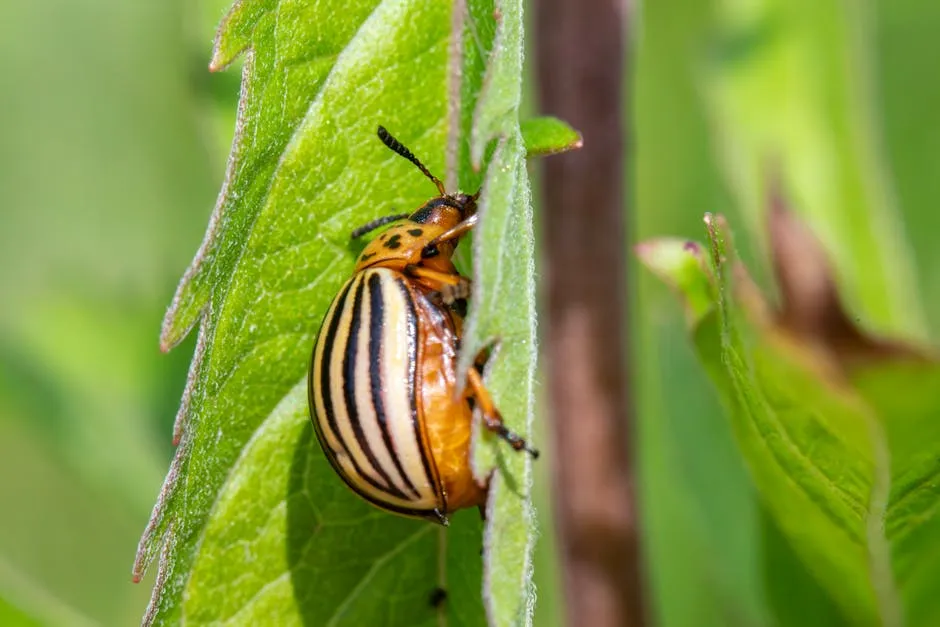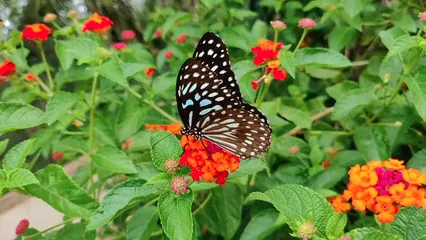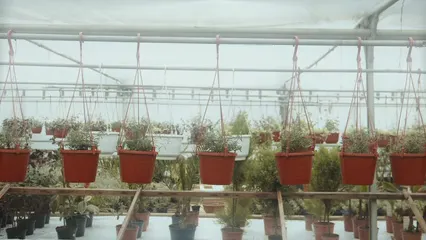

The Ultimate Guide to Vine Plants: Types, Care, and Benefits
Introduction
Vine plants are a favorite choice for gardeners and landscapers. Their climbing nature and lush foliage add charm to any space. Whether you want to beautify your garden or create privacy, these plants are versatile and visually stunning. In this article, we’ll look at various types of vine plants, care tips, and the many benefits they offer.
Before you start your vine garden, consider investing in a good pair of gardening gloves. They protect your hands from thorns and dirt while you dig, plant, and prune. Trust me, your hands will thank you later!
Summary and Overview
This guide covers everything you need to know about vine plants. We’ll discuss their importance in ecosystems and home gardens, showcasing how they enhance beauty and biodiversity. You’ll learn about different types of vine plants, including both flowering and non-flowering varieties.
Flowering vines, like Wisteria and Honeysuckle, provide vibrant colors and delightful fragrances. Non-flowering options, such as Ivy and Boston Fern, offer lush foliage perfect for covering walls or creating green spaces.

We’ll also share essential care requirements for these plants, including water, soil, and pruning needs. Furthermore, cultivating vine plants can benefit the environment by improving air quality and preventing soil erosion. By the end of this article, you’ll be well-equipped to choose and care for vine plants in your own garden.
Types of Vine Plants
1. Flowering Vine Plants
Flowering vines bring color and fragrance to gardens. Popular choices include Wisteria, Honeysuckle, and Clematis.
Wisteria is known for its stunning cascades of purple or white flowers. It blooms in late spring, creating a breathtaking display. This vine prefers full sun and well-drained soil. It thrives in USDA zones 4-9. If you’re looking to start your own Wisteria journey, check out these Wisteria seeds!

Honeysuckle is another favorite. With its sweet scent and bright yellow or orange blooms, it attracts hummingbirds. This vine flourishes in various conditions, including partial shade. Honeysuckle grows in zones 3-9.
Clematis offers a variety of colors and shapes. Its flowers can be star-shaped or bell-like. Clematis blooms from spring to fall, depending on the type. It loves rich, well-drained soil and can thrive in zones 3-9.
These flowering vines not only beautify your garden but also provide essential habitats for pollinators. If you’re serious about attracting those buzzing friends, consider adding a ladybug house to your garden. They love munching on aphids!
2. Non-Flowering Vine Plants
Non-flowering vines might not boast blooms, but they offer lush greenery. Ivy, Boston Fern, and Hops are popular choices.
Ivy is versatile and hardy. It can cover walls or trellises with its dense foliage. This vine prefers partial to full shade and well-drained soil. Ivy is suitable for zones 4-9.
Boston Fern is great for adding texture. Its feathery fronds create a soft, inviting look. This fern thrives in humid conditions and indirect light. It grows well in zones 9-11.
Hops are not just for brewing beer; they also provide lush greenery. Hops grow rapidly and can reach heights of 20 feet or more. They prefer full sun and rich, well-drained soil, thriving in zones 3-8. If you’re intrigued by brewing your own beer, check out these hops seeds to start your brewing adventure!

Hops not only add greenery but also have practical uses in brewing. Learn more about hops plant seeds.
To maintain non-flowering vines, ensure they have adequate moisture and occasional pruning. This keeps them healthy and encourages bushier growth. Don’t forget to keep an eye on the soil moisture with a soil moisture meter to ensure they are getting the right amount of water!
3. Edible Vine Plants
Edible vines make gardening rewarding and delicious. Grapes, Kiwi, and Passionfruit are standout choices.
Grapes are easy to grow and highly productive. They need full sun and well-drained soil to thrive. Grapes can be grown in most regions, thriving best in zones 5-8. For those looking to get started, grab some grape vine seeds and start your vineyard today!

Kiwi is a unique choice. It requires a sturdy support structure and well-drained soil. Kiwi vines need full sun and can grow in zones 6-9. They offer sweet, nutrient-rich fruits.
Passionfruit is not only beautiful but also flavorful. Its exotic flowers are eye-catching, and the fruits are tangy and delicious. Passionfruit prefers full sun and well-drained soil, thriving in zones 10-11.
Growing these edible vines at home provides fresh produce and adds nutritional value to meals. Enjoy the fruits of your labor in various dishes, from salads to desserts! And to give your plants the nutrients they need, don’t forget to use plant fertilizer!
4. Ornamental Vine Plants
Ornamental vines can transform your garden into a stunning oasis. Two popular choices are Bougainvillea and Jasmine. Both add vibrancy and charm to any outdoor space.
Bougainvillea is famous for its brilliant, paper-like bracts. These colorful blooms catch the eye and thrive in warm climates. Plant them in sunny spots for the best results. They are perfect for trellises or fences, providing a vibrant backdrop in any garden.

On the other hand, Jasmine enchants with its sweet fragrance. Its delicate white or yellow flowers create a soothing atmosphere. Jasmine prefers well-drained soil and partial shade. It can climb on structures or cascade from hanging baskets.
Incorporating these vines can enhance your landscaping significantly. They can soften hard edges, create focal points, or add privacy to your yard. Consider planting them near outdoor seating areas to enjoy their beauty and fragrance while relaxing. You might also want to add some outdoor garden decor to really set the mood!
When designing your garden, think about the height and spread of these vines. Bougainvillea can grow quite large, so give it ample room. Jasmine, while also sprawling, may require support to climb. Mixing these vines with other plants can create a lush, layered look.
In summary, ornamental vines like Bougainvillea and Jasmine not only beautify your garden but also enrich your outdoor experience. With a little planning, they can become stunning features in your landscape design.
Jasmine plants add a delightful fragrance and charm to your garden. Discover more in our jasmine plant guide.
5. Pest and Disease Management
Vine plants can face several pests and diseases. Recognizing these threats is crucial for maintaining their health.
Common pests include aphids, spider mites, and whiteflies. Aphids suck the sap from leaves, causing wilting. Spider mites create tiny webs and can lead to yellowing leaves. Whiteflies also feed on plant sap, weakening the vines.
Diseases can range from powdery mildew to root rot. Powdery mildew appears as white spots on leaves, typically in humid conditions. Root rot occurs when roots sit in waterlogged soil, leading to decay.
For pest management, consider both organic and chemical strategies. Organic methods include introducing beneficial insects, like ladybugs, which eat aphids. Neem oil is another option, acting as a natural pesticide. Regularly inspecting plants helps you catch infestations early. You can easily find neem oil at your local garden store or online!
If you opt for chemical solutions, choose targeted insecticides. These will minimize harm to beneficial insects. Always follow the instructions for safe application.
Prevention is key. Maintain proper air circulation around plants to reduce humidity. Ensure good drainage to prevent root rot. Regular pruning can also improve airflow, making your vines less susceptible to pests and diseases.

With the right care, your vine plants can thrive, free from harmful pests and diseases. And for even better results, consider using an organic insecticide to keep those pests at bay!
Environmental and Health Benefits of Vine Plants
1. Air Quality Improvement
Vine plants play a significant role in enhancing air quality. They absorb carbon dioxide and release oxygen, which is vital for our well-being. Certain vine species can filter pollutants and particulates from the air, contributing to cleaner environments.
Research indicates that indoor plants can reduce indoor air pollutants by up to 87% in 24 hours. This impressive statistic underscores the importance of incorporating vine plants into homes and gardens.
Moreover, vines can help lower temperatures in urban areas. By providing shade and releasing moisture through transpiration, they create a cooler microclimate. This effect can reduce energy costs for air conditioning, making vine plants both eco-friendly and economical.
2. Erosion Control
Vine plants are excellent for preventing soil erosion. Their extensive root systems stabilize the soil, reducing runoff during heavy rains. This is particularly important on slopes or in areas prone to erosion.
In gardens, vines can cover bare soil, protecting it from wind and water erosion. For example, creeping varieties like Vinca minor cling to the ground and provide a protective mat. This not only keeps soil in place but also suppresses weeds.
In landscaping, using vines on trellises or walls can prevent soil loss while enhancing beauty. This natural approach to erosion control benefits both the environment and your garden’s aesthetics. You can also use a compost bin to create nutrient-rich soil for your plants!

3. Biodiversity and Habitat
Vine plants support local ecosystems, creating habitats for various wildlife. They provide food and shelter for birds, insects, and other creatures. For instance, flowering vines attract pollinators like bees and butterflies, essential for plant reproduction.
Some vine species, like Passionflower, are particularly attractive to butterflies. They lay their eggs on these plants, ensuring their larvae have a food source. Similarly, vines like Honeysuckle offer nectar for hummingbirds, fostering biodiversity in your garden.
By planting diverse vine species, you contribute to your local ecosystem’s health. This not only supports wildlife but also promotes a balanced environment. Encouraging biodiversity creates a thriving garden that benefits everyone. And for those who want to keep track of their garden’s progress, a garden journal can be a great tool!

4. Aesthetic Benefits
Vine plants enhance the visual appeal of any space. Their climbing nature adds a touch of elegance and charm. From cozy patios to sprawling gardens, these plants can transform ordinary areas into stunning landscapes.
Picture a trellis adorned with vibrant flowering vines. Bougainvillea and Jasmine create a burst of color and fragrance, inviting guests to admire their beauty. These vines can also provide privacy while softening hard edges in your garden.
Vertical gardens are another fantastic way to incorporate vine plants. They maximize space and create lush green walls. Consider using edible vines like Grapes or Kiwi for a productive and attractive display. Imagine harvesting fresh fruit while enjoying the beauty of your garden. If you’re looking for a great way to get started, a vertical garden planter could be just what you need!

In small spaces, hanging pots with trailing vines like Ivy can add depth and interest. They bring greenery to balconies and small patios without overwhelming the area. The possibilities are endless when it comes to using vine plants creatively. And for those hot summer days, consider adding an outdoor hammock to relax under your lovely vines!
FAQs
What are the best vine plants for small gardens?
For small gardens, choose space-efficient varieties. Consider Sweet Pea or Clematis for their compact growth. These vines climb well and don’t need much space. You can also opt for trailing plants like String of Hearts, which look beautiful in hanging pots.
How do I care for indoor vine plants?
Indoor vine plants require bright, indirect light. Water them when the top inch of soil feels dry. Regularly check for pests like spider mites. Pruning helps maintain their shape and encourages bushier growth.
Can I grow vine plants in containers?
Absolutely! Many vine plants thrive in containers. Choose varieties like Hoya or Pothos, which adapt well to pot life. Ensure your containers have drainage holes and use quality potting soil for the best results.
What is the best time to plant vine plants?
The ideal time to plant vine plants depends on the variety. Generally, spring is best for most types, allowing them to establish roots before summer heat. However, check specific needs for each plant type.
How do I propagate vine plants?
You can propagate many vine plants through cuttings or layering. For cuttings, snip a healthy section and place it in water or soil until roots form. Layering involves bending a stem to the ground to encourage rooting.
Are vine plants invasive?
Some vine plants can become invasive, like English Ivy or Japanese Honeysuckle. To manage this, keep an eye on their growth and prune regularly. Choose native or non-invasive varieties for a more controlled garden.
What pests typically affect vine plants?
Common pests include aphids, whiteflies, and mealybugs. To prevent infestations, regularly inspect your plants. You can use insecticidal soap or introduce beneficial insects like ladybugs to keep pests at bay.
Please let us know what you think about our content by leaving a comment down below!
Thank you for reading till here 🙂
All images from Pexels



